A Review of the Vortex ViBE Mechanical Keyboard
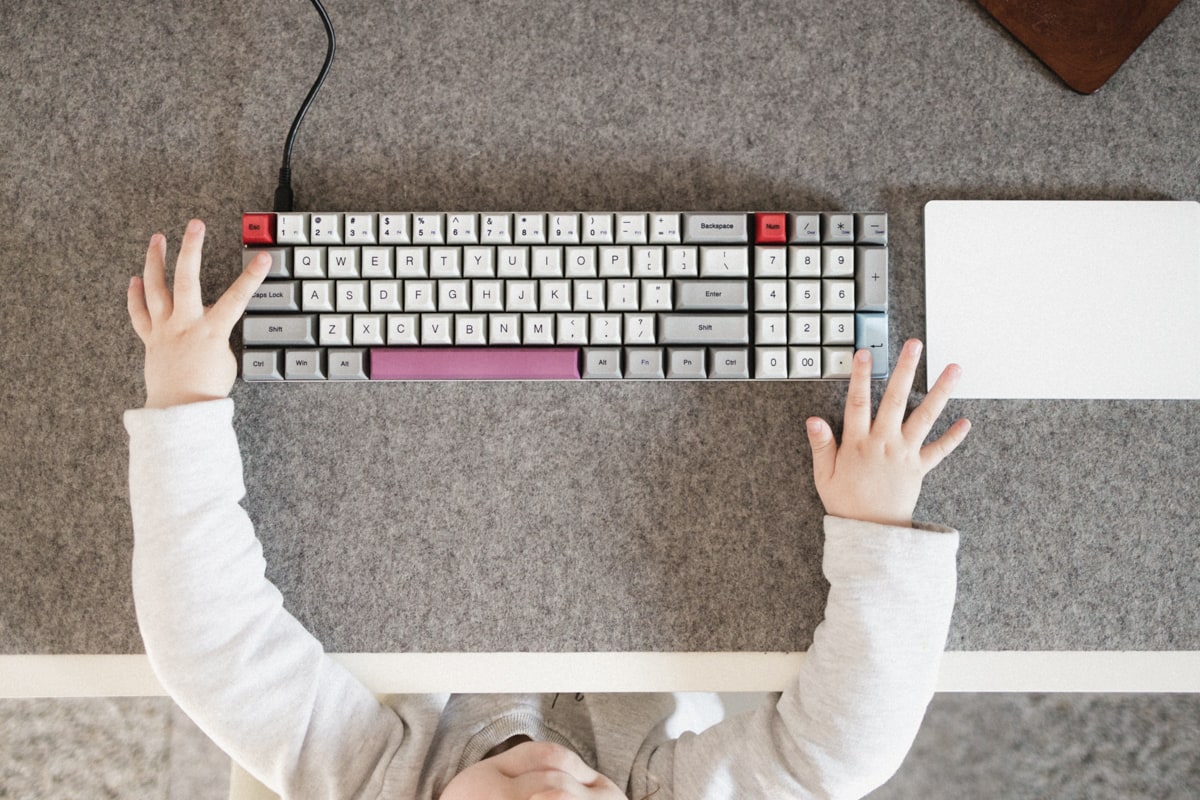
After all these years of seeing my colleagues here at The Sweet Setup rock their semi-pretentious mechanical keyboards, it was time I partook and attempted to discover the secret sauce behind their looniness (Editor’s note: Josh means “undeniable awesomeness” in this context). Shawn loves his Keychron K2, Mike his CODE, Isaac his Magicforce, Jeff his custom-built Keebio Nyquist (among many others I hear), and Rose her Fnatic — many of which rock Cherry MX Browns — and so it was high time I joined the fun.
I opted for the Vortex ViBE, a unique layout that jettisons the standard arrow keys and Page Up/Down, Home, End, Insert, and Delete keys in favor of a 60% layout plus number pad. My day job and study require said number pad, so there was little compromise here. Otherwise, the rest of the Vortex ViBE has been a unique experience.
Though, the uniqueness of the experience has been both good and bad. For instance, it took me at least a week to understand why people prefer the feel of a mechanical keyboard over a thinner variety found on most laptops today — at first, the feeling was far from “magical,” as was the vibe I got whenever speaking to a mechanical keyboard whiz. I’ve also run into nothing but issues with the keyboard’s support — I simply can’t get the ViBE to work in the “Numpad Mode,” where I can use the number pad to, you know, type numbers. This thing is stuck in ten keyless mode and I can’t get it out.
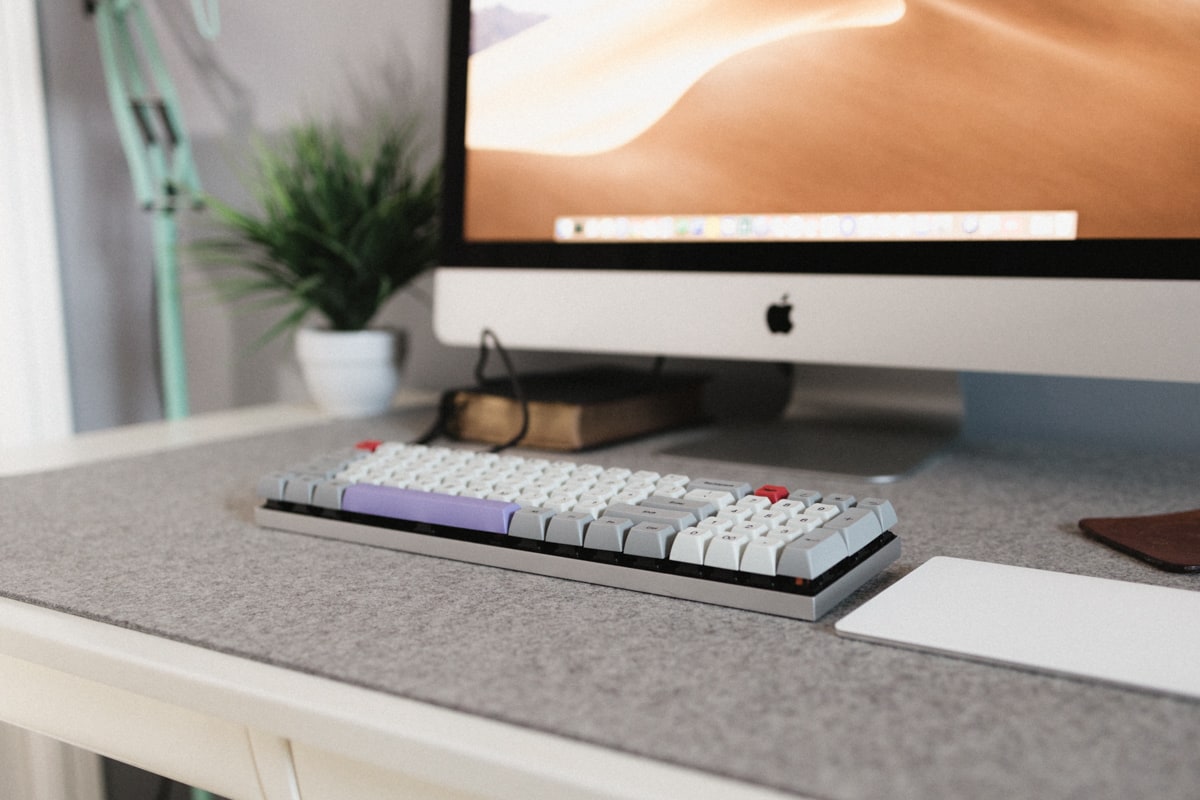
My experience has been good enough to keep going with the Vortex ViBE, but I’m certainly going to be looking for other mechanical keyboard options.
Note: This review was last updated on June 19, 2020 to reflect some issues corrected regarding the Vortex ViBE’s firmware when working on a Mac computer. The shortcomings discussed in the review were corrected after a change was made in Karabiner Elements’s keyboard remapping software. The ViBE’s experience is now as is expected out-of-the-box.
Must-Have, Most-Used Apps for Thinkers
We spend an inordinate amount of time sorting through hundreds of apps to find the very best. Our team here at The Sweet Setup put together a short list of our must-have, most-used apps for writing, note-taking, and thinking.
Design and Materials
Of all the mechanical keyboard options available today, why opt for the Vortex ViBE as your first? Aside from the unique layout, I really fell for the ViBE’s physical design. The floating keycap look is my favorite keyboard design so far, while the aluminum tray is both flashy and sturdy. The off-white keys have a retro vibe, while the keycap type face is easy to read and unique from the old-fashioned keyboards I associate with 90s-era computers.
In short, the ViBE looks incredible.
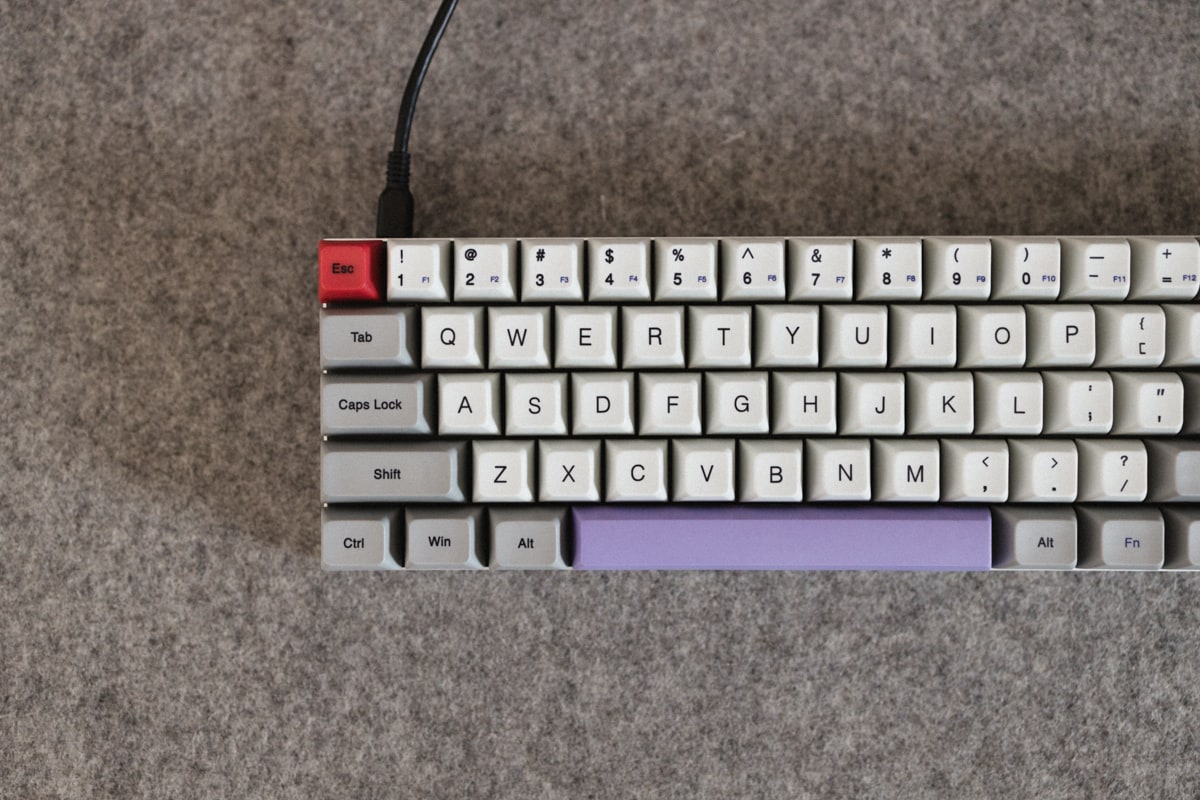
I’m especially a fan of the ViBE’s keycaps. The PBT keycaps come standard, which I’ve learned is the more durable of the two most widely used keycap plastics. I’ve noticed no fingerprint accumulation so far on the keycaps and I really like the soft-plastic feel. They’re just tremendous.
The keycaps are printed via dye sublimation, which is probably best explained by the folks over at Mechanical Keyboard Info:
Dye-sublimation is the process of adding ink to keycaps by heating the ink to the point that it becomes a vapour. This vapour is then absorbed into the pores of the plastic thus becoming part of the keycap. This slows down the rate of wear as the ink has become part of the plastic.
Though Mechanical Keyboard Info found the printing to not be precisely uniform, my young and inexperienced eyes can’t find anything to complain about on my board.
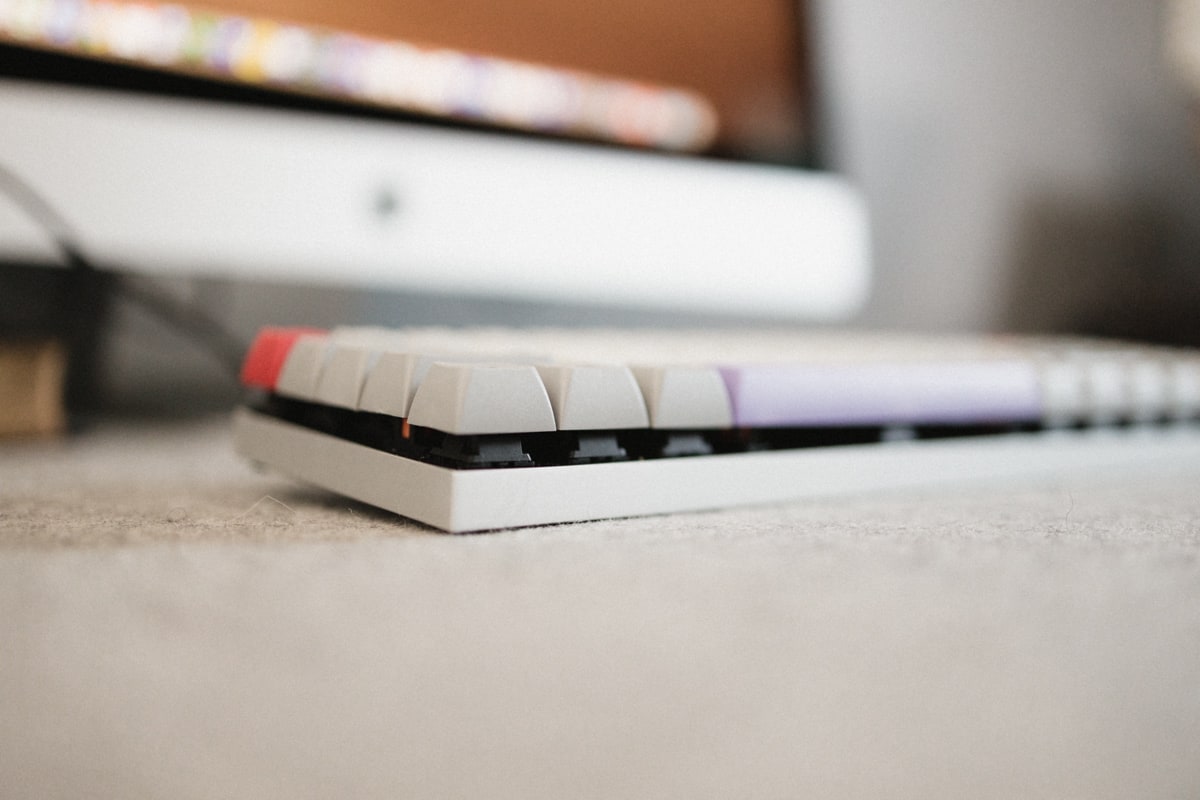
The keycaps come in a uniform R3 shape (Row 3 from a sculpted keycap set, as I’ve learned) and I quite like the uniform look and feel. The keys are surprisingly tall, mind you — coming from the thinnest of thin keyboards in the form of the Magic Keyboard for iPad Pro, the thickness and height of the ViBE surprised me. I’ve ordered a wrist rest to compensate.
Perhaps the most vain reason for my purchase of the Vortex ViBE were the extra multi-colored keycaps that ship in the box. Vortex sends along additional Escape, Enter, Num, Return, and Space Bar keycaps with unique pastel and Lego-like coloring. I’m especially fond of the purple and plum space bars — I have the purple space bar latched on right now, but I think I’m going to go back and forth often in my time of ownership.
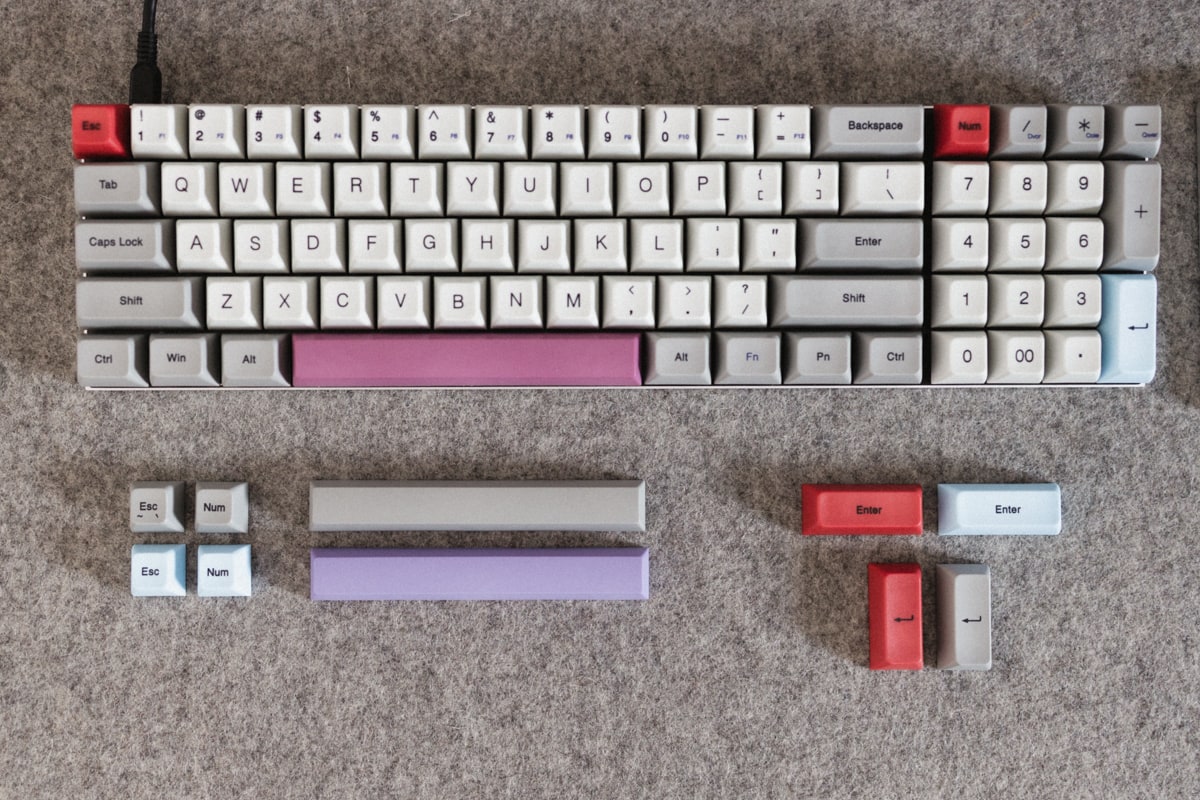
Unfortunately, not all the extra keycaps have been the same great experience. I quickly attempted to change the Enter key with the included pastel-blue keycap (which, by the way, was a lesson in frustration given the fact Vortex doesn’t ship the ViBE with a keycap remover tool thing-a-ma-jig) and I simply couldn’t get the blue keycap to fit the stabilizers beside the actual key switch. Using my pinky, I could actuate the left side of the Enter key five times and one simple actuation on the right side of the key would cause the keycap to pop right off the switch.
I don’t think I’ve ever experienced such a frustrating event with a keyboard. (Well, the entire butterfly keyboard experience with prior-generation Macs was pretty bad. But this was up there.)
Same goes for the Return key on the number pad — even now, I don’t think the default grey keycap is sitting quite right on the stabilizers.
As a whole, I’ve had to return to the default grey keys for both the Enter and Return keys.
Bummer.
The Vortex ViBE in YouTube videos — specifically the model that was first shipped to reviewers — had really beautiful white and RGB backlighting. Unfortunately, the actual retail version of the keyboard doesn’t include any backlighting at all, save for the multi-colored light below the Caps Lock key. A red light means Caps Lock, green means Num Lock, and yellow means Both Lock. To this day, I have not yet had a backlit keyboard for my iMac, so I wasn’t too disappointed with this. Those more experienced and more picky keyboarders should take note.
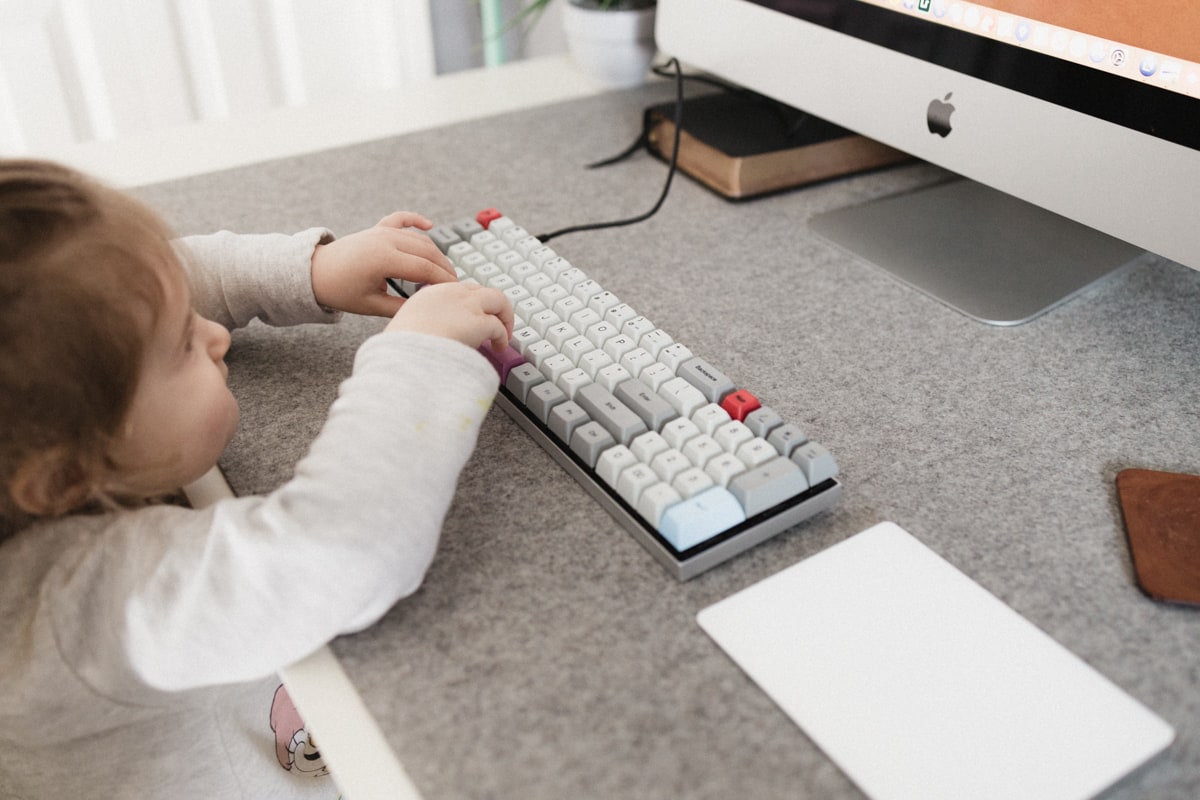
Lastly, I opted for Cherry MX Brown switches for my first mechanical keyboard rodeo. I watched as many videos as I could regarding the different switch types and even took Cherry’s own survey to determine which switch was best for my needs. Like many other colleagues of mine, I ended up with MX Browns and have been pleasantly surprised with the experience.
At first, I expected a bit more clickiness in each actuation. MX Browns are categorized as “Tactile” keys, whereby the little mechanism on the side of the switch provides some tactile feedback on each key press. I admit to expecting a bit more tactility to that little bumper thing.

That said, any clickier and I’m sure my office colleagues would have kicked me out of the office — the Cherry MX Browns are about as loud as I’m willing to go in an office environment. I’d consider MX Blues for at home, but I think anything louder than these Browns might wake up the baby.
So, in summary, I’m really impressed with the feel of the PBT, dye-sublimated keys and I adore the look of the extra keycaps included in the box. I’m very disappointed the extra keycaps don’t properly line up with the stabilizers and switches, but these Cherry MX Brown switches are coming around for me.
I ordered a Keychron K1 V4 with Gateron Brown low-profile switches, just to make sure.
Layout and Support
The 60% layout plus number pad is a unique layout to Vortex and one I was hoping would meet my needs both as a writer and as an accountant. When connected to a Windows PC, the ViBE does well in both modes. When connected to a Mac, not so much.
Update: I am particularly hard on the Vortex ViBE when it comes to keyboard firmware shipped in the box. Plugging the ViBE into a Mac keyboard and attempting to use it naturally from the get go remains a lesson in patience.
It’s important to update the ViBE via the Windows-only software as soon as you get the keyboard. This will ensure the ten keyless mode and number pad modes work as they are supposed to.
The rest of this section delves into my experiences using the updated ViBE keyboard firmware with a Mac, and it was initially atrocious due to a hiccup inside Karabiner Elements.
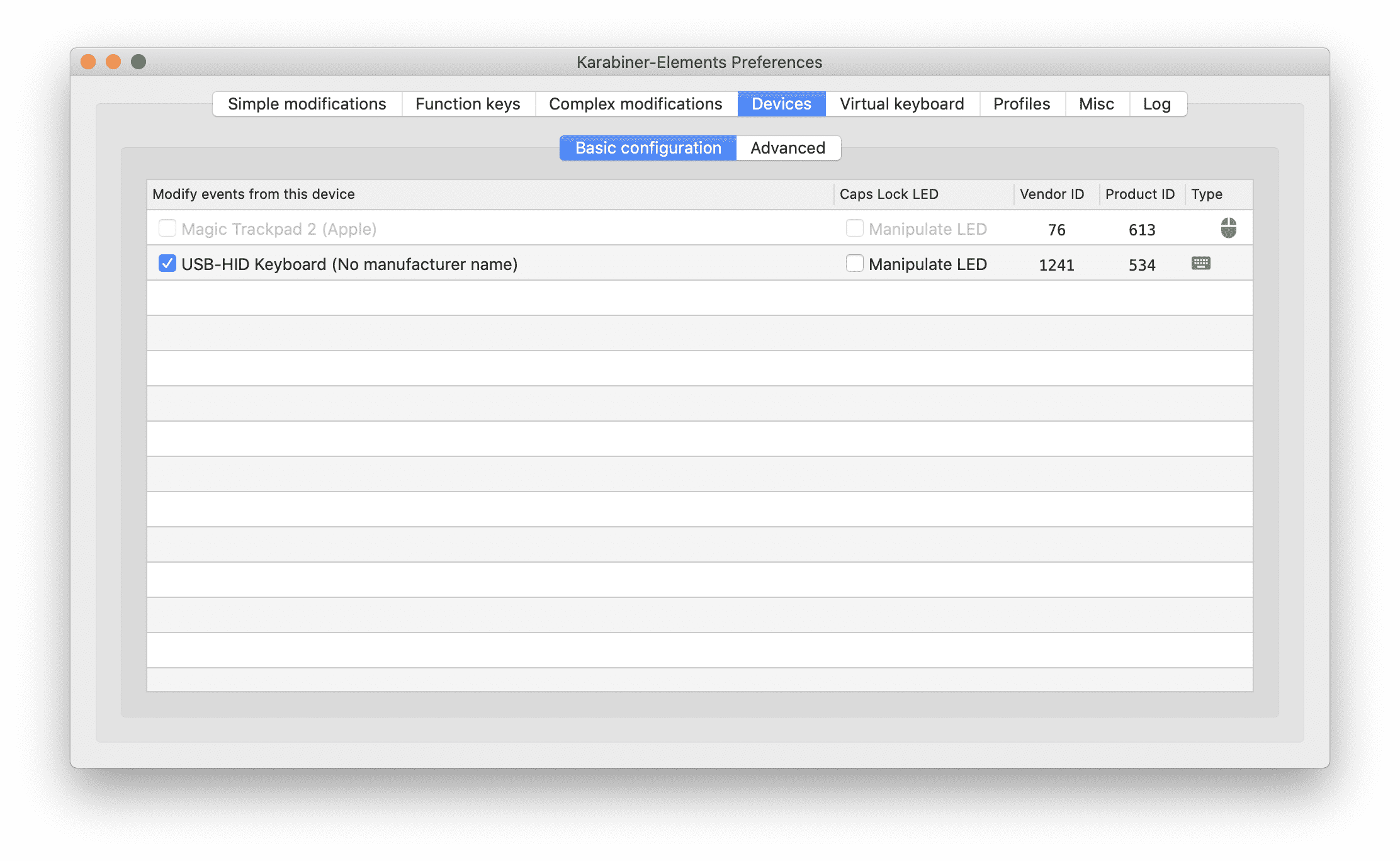
Inside Karabiner Elements, I had checked the box beside “USB-HID Keyboard” to ensure Karabiner Elements interacted with the ViBE when it was plugged in. At that point, I had created a few key changes to ensure the Alt button to the immediate left of the space bar acted as a Command key, just like on a Mac.
I also, however, had checked off “Manipulate LED” in the “Devices” section of Karabiner Elements, and this must have been the cause for all of my firmware and support issues. When this box was checked off, I was able to enter into number pad mode via Fn + Num Lock (as per the keyboard manual), but the mode would only stick for a second or two before it would jump back into the standard ten keyless mode. Once I unchecked the “Manipulate LED” box in Karabiner Elements, both ten keyless mode and number pad mode were fully operational.
I apologize for not finding this error sooner. In all likelihood, my reactions regarding the ViBE’s firmware were cause for concern for any potential buyers. I hope I have clarified how to fix my error.
I will, however, leave my initial reactions below. I think it’s safe to assume I won’t be the only user who makes this mistake with the Vortex ViBE and hopefully this update shows how to avoid the error entirely.
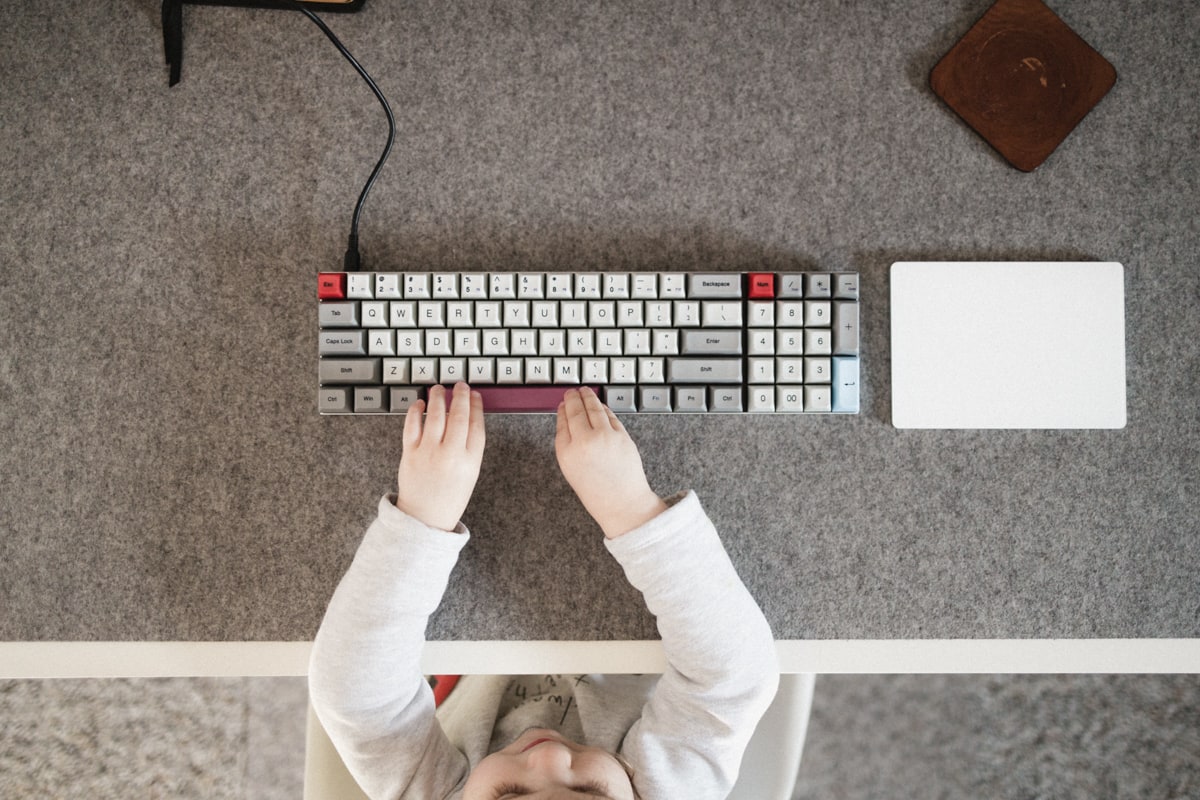
First, and chief among the ViBE’s best features, is its ability to house a full QWERTY keyboard and number pad into a 14-inch long keyboard body. This small body size provides more room on your desk, which is especially noticeable when using any number pad keyboard with the Magic Trackpad 2.
Second, the 60% layout provides all the keys I absolutely need, but omits a few keys I absolutely wish I had. Funny how you don’t know which keys you absolutely require until you no longer have them.
For instance, the ViBE omits the function key row, opting instead for an “Fn + Number Key” combination press to use the function keys. When writing, I’ve yet to find this to be an issue. But when working in an app like Microsoft Excel, the lack of function row keys is a near killer. You can make it work, but it’s not ideal for drilling into a specific cell.
I also had no idea how much I’d miss dedicated Page Up and Page Down keys. Jumping between pages in an Excel workbook is best done by using a “Command + Page Up/Down” keystroke rather than clicking between pages.
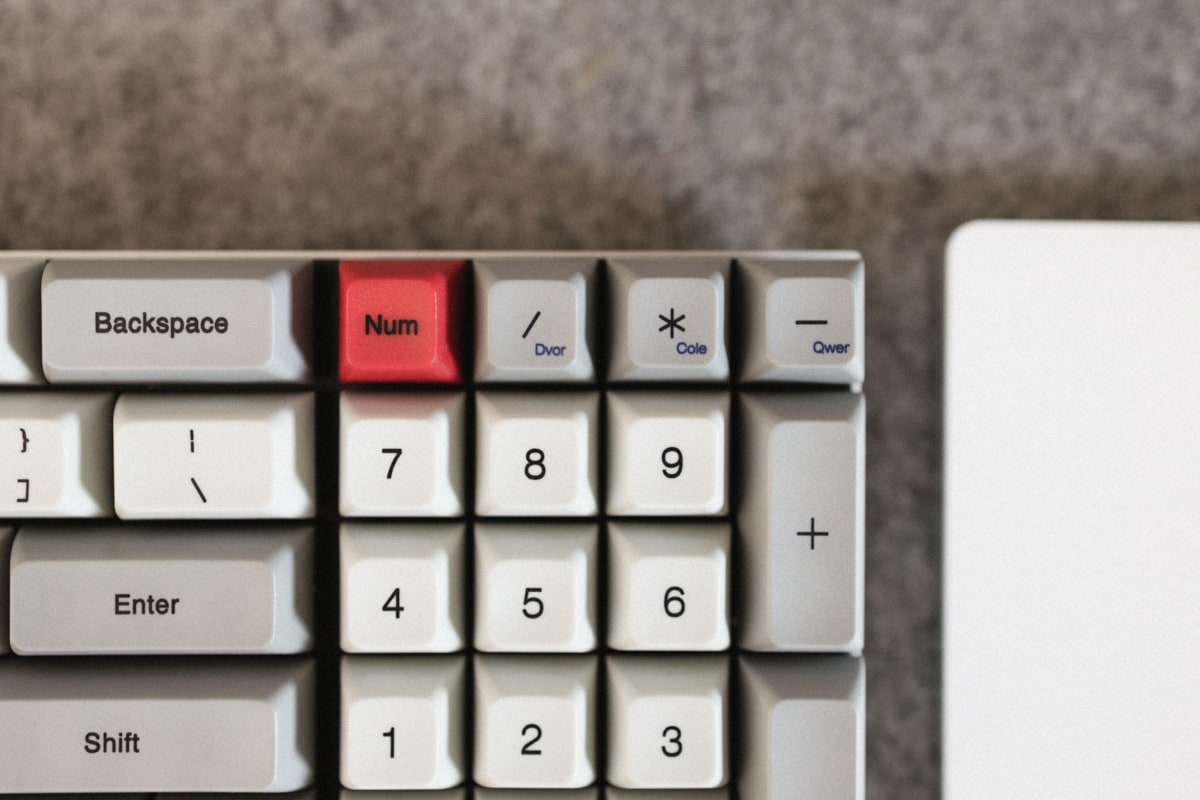
All the functionality is still present with the ViBE, but there’s some extra key pressing and learning to be done. The ViBE has two specific modes: tenkeyless mode and number pad mode. Number pad mode is entered into by pressing the “Num” key and lighting up the green light under the Caps Lock key.
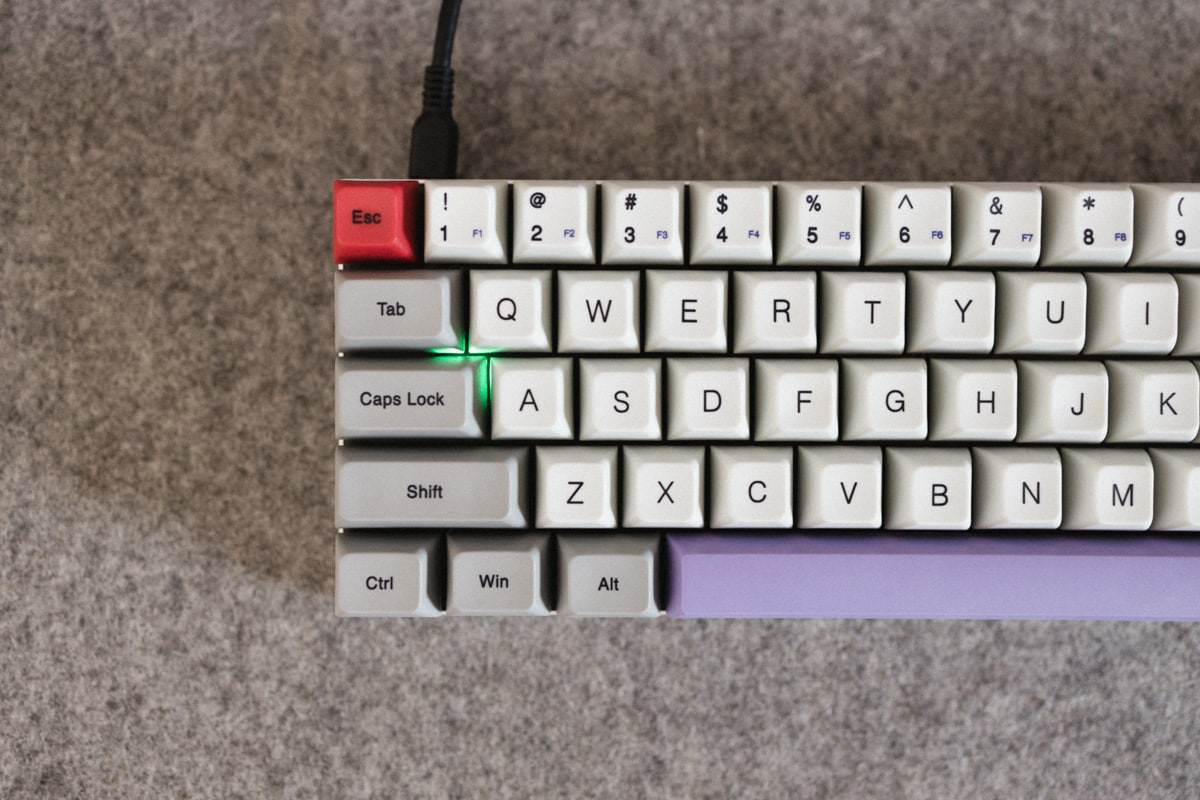
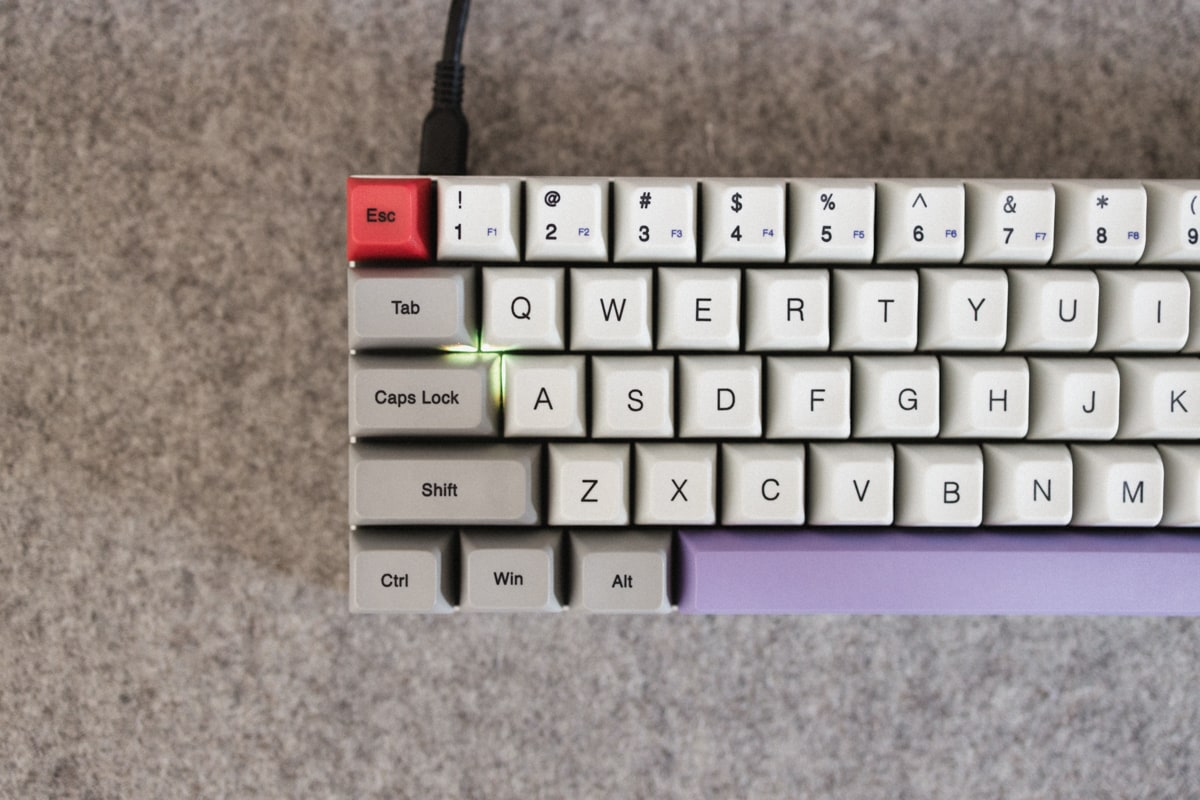
When in number pad mode, the keypad works as expected. Each number inserts a number, while the operation keys (“+”/”-“/”/”/”*”) insert operators for equations. Great — just as expected.
In tenkeyless mode, each of the keys on the number pad operate as seen in the diagram below:
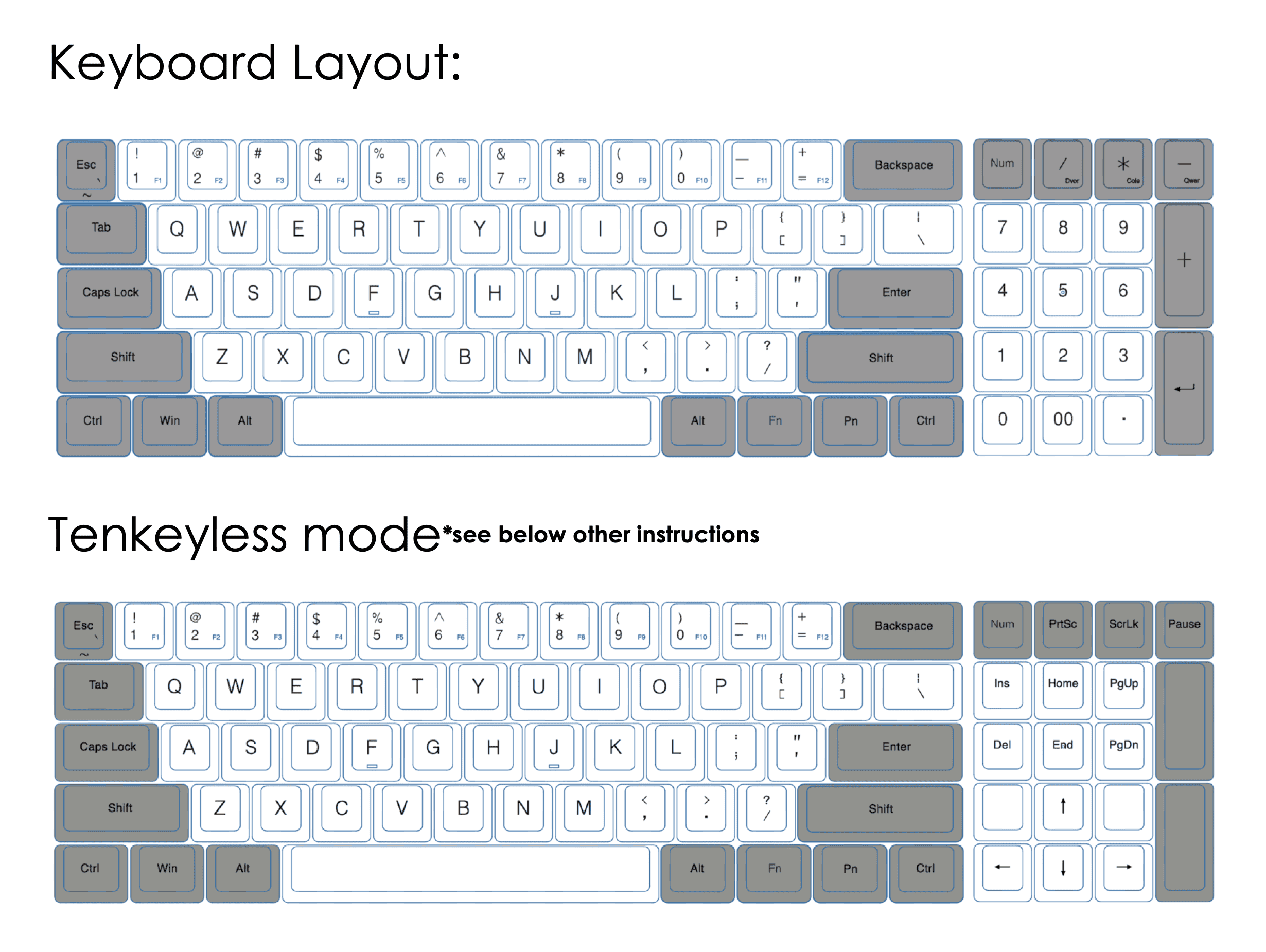
Vortex split the “0” key into two individual keys (zero and double-zero) to ensure 0/00/./2 keys act as your standard T-shaped arrow keys and 9/6 keys act as Page Up and Page Down.
This is a unique layout trick that convinced me to give the ViBE a shot considering my heavy need for a standard keypad at my day job.
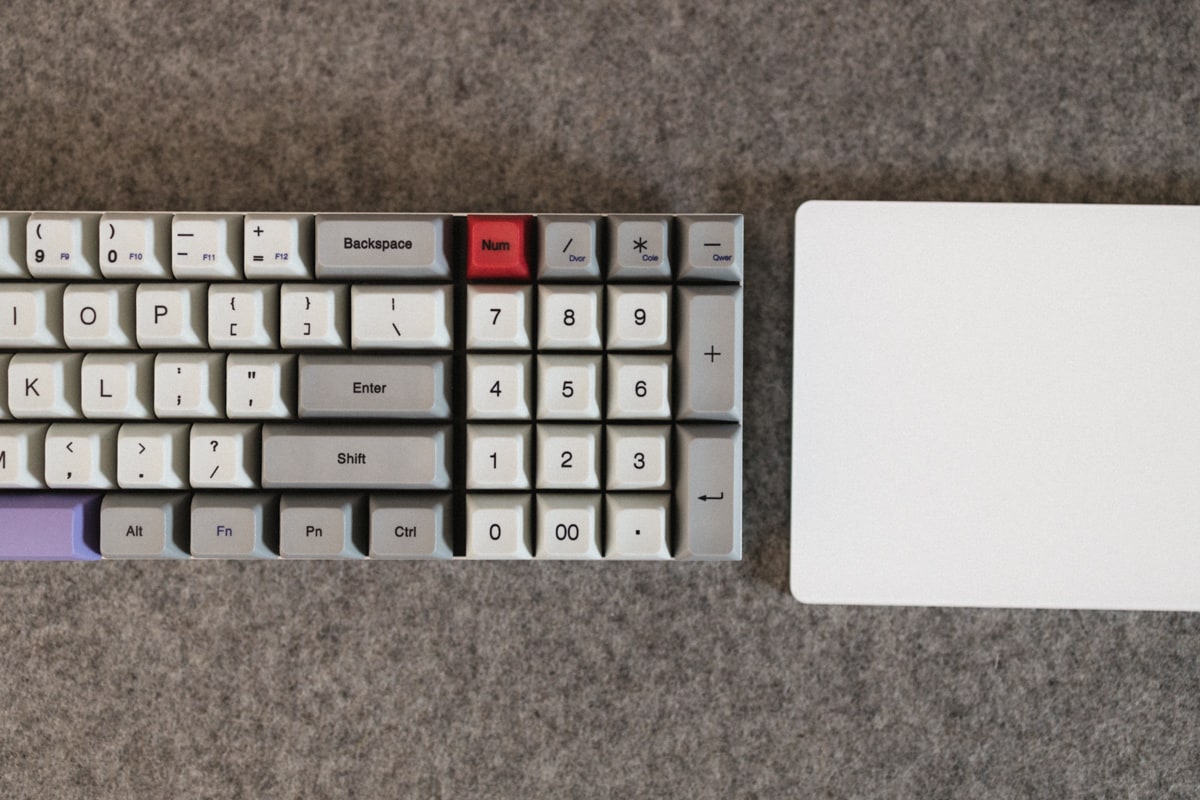
My experience with the tenkeyless vs. number pad modes can be summed up as:
When the operating system actual recognizes the number pad mode: I loved having the number pad available for working inside of Excel, but it was surprising how often I had to hit the “Num” key to jump between numbers and the arrow keys (I recognize you can use the “Fn + I/J/K/L” to act as arrow keys, but it was very awkward to navigate arrow keys with my left hand). The need to hit the “Num” key to enter number pad mode meant a drop of my head to see if the green light was on before returning to what I was working on.
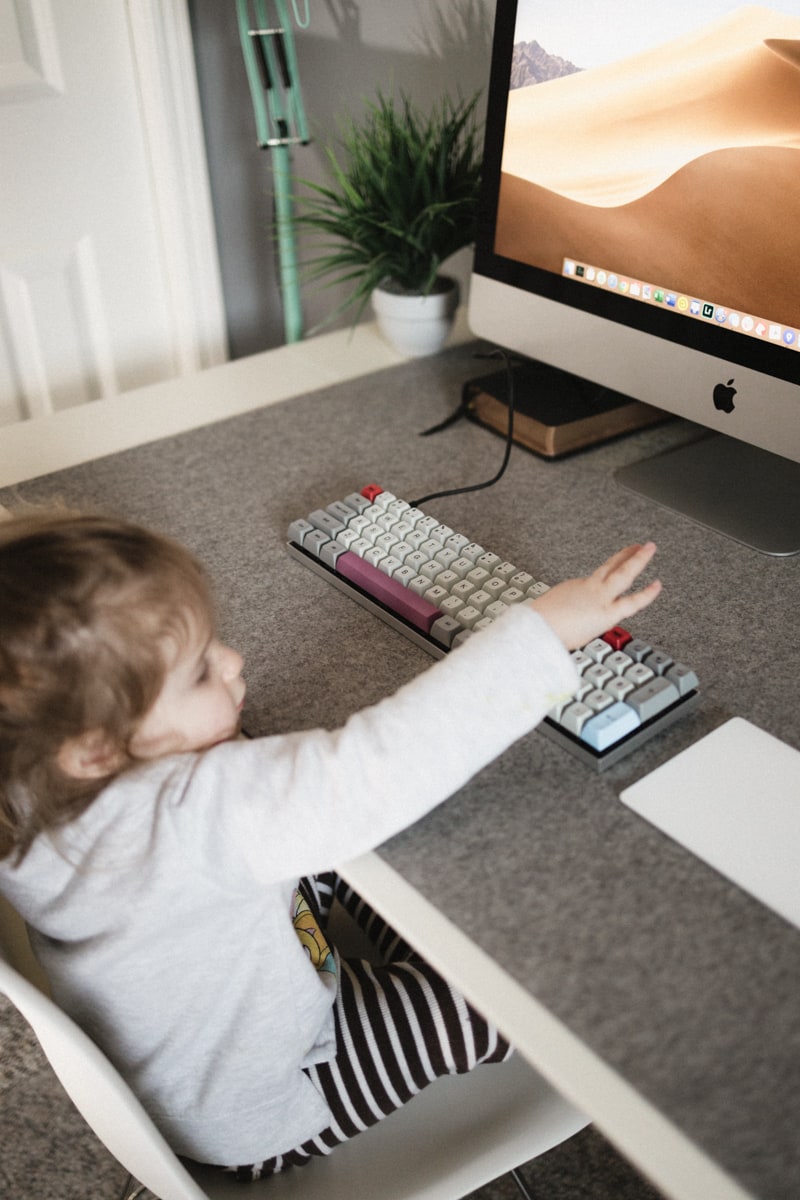
When the operating system doesn’t recognize number pad mode: As at the time of writing, the Vortex ViBE seems to be permanently stuck in ten keyless mode, meaning the number pad acts as arrow keys and Page Up/Page Down keys and I can’t enter numbers at all. If I try to enter number pad mode, the green light lights up for two seconds before dissipating and putting me back into ten keyless mode. So, essentially, I’m left with a very unique 60%-plus-navigational-keys layout, which I’m sure is not one-of-a-kind in the mechanical keyboard market.
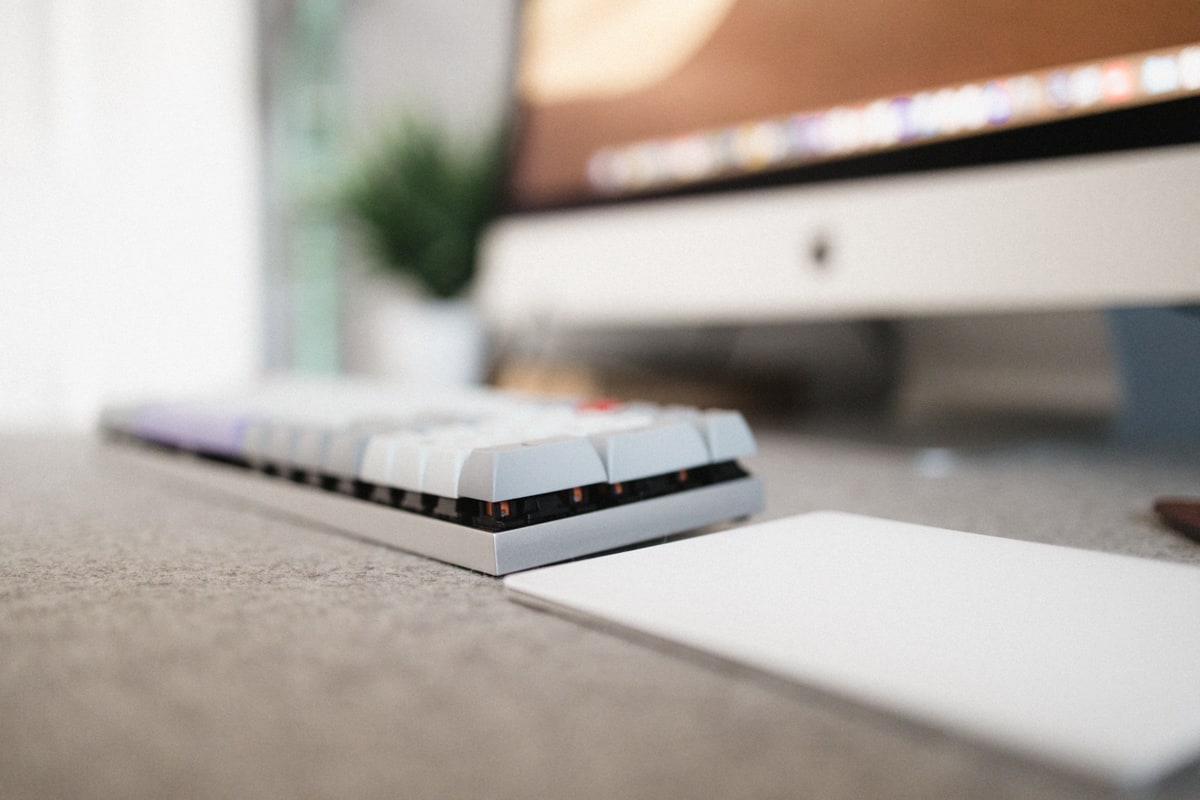
It seems the number pad mode only works when connected to a Windows PC — when connected to a Mac, the ViBE stays in ten keyless mode, even after updating the keyboard’s firmware via the Windows-only software.
As a whole then, the very purpose of my purchase (a unique writing plus number pad layout) is entirely lost on me. I’m glad the ViBE is stuck in ten keyless mode when connected to a Mac, or this keyboard would be completely useless to me.
I/O and Programming
Like many less-than-100% mechanical keyboards, the ViBE is programmable and has up to three different layers for you to customize. Layers can be jumped into by pressing the Fn + < or Fn + /, keys and you can jump back into the default layer by hitting Fn + M. I haven’t found particular need at this point for programming layers, but I can imagine those who type the same things over and over and over will find programmability particularly useful.
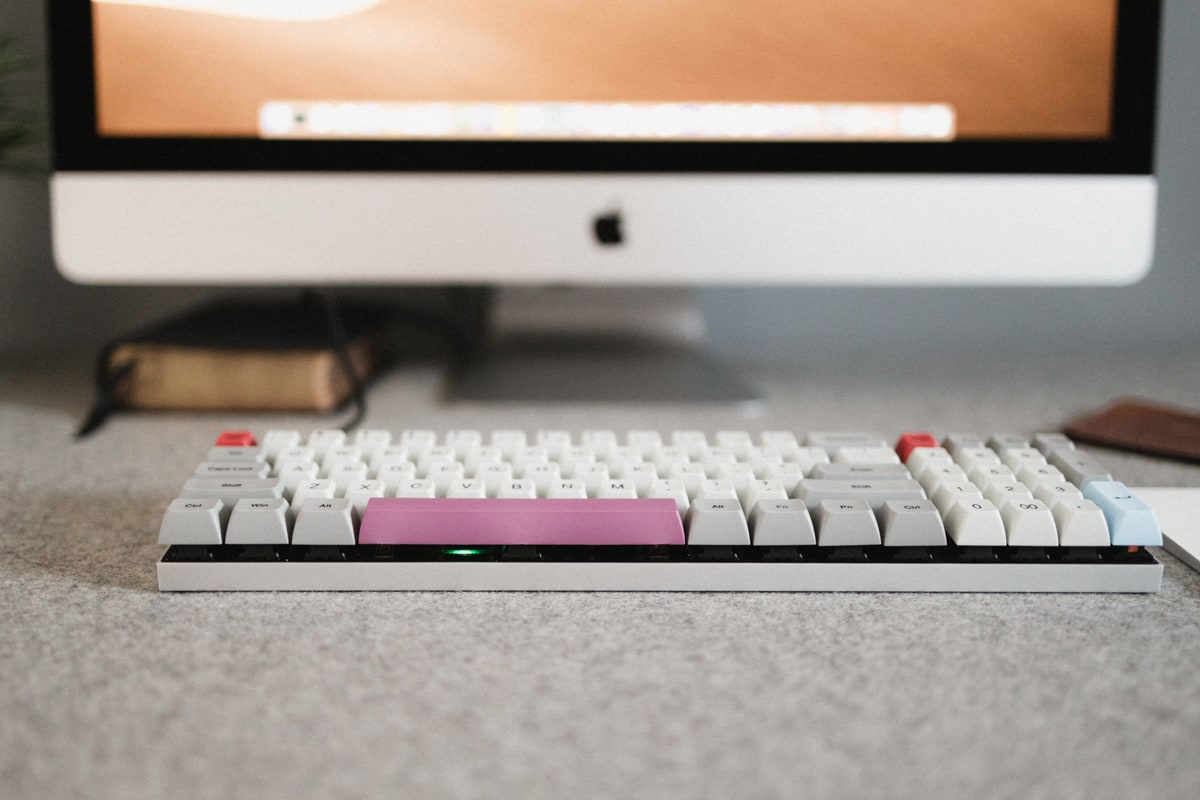
The ViBE has no Bluetooth connectivity or internal battery to operate wirelessly, relying entirely on micro-USB. This is, of course, both good and bad.
One, I hate keyboard battery life. Having to recharge keyboards and peripherals is one of my pet peeves. I love the look of an all wireless setup, but the more batteries to charge, the worse the experience. As a result, I’m entirely happy with a wired connection.
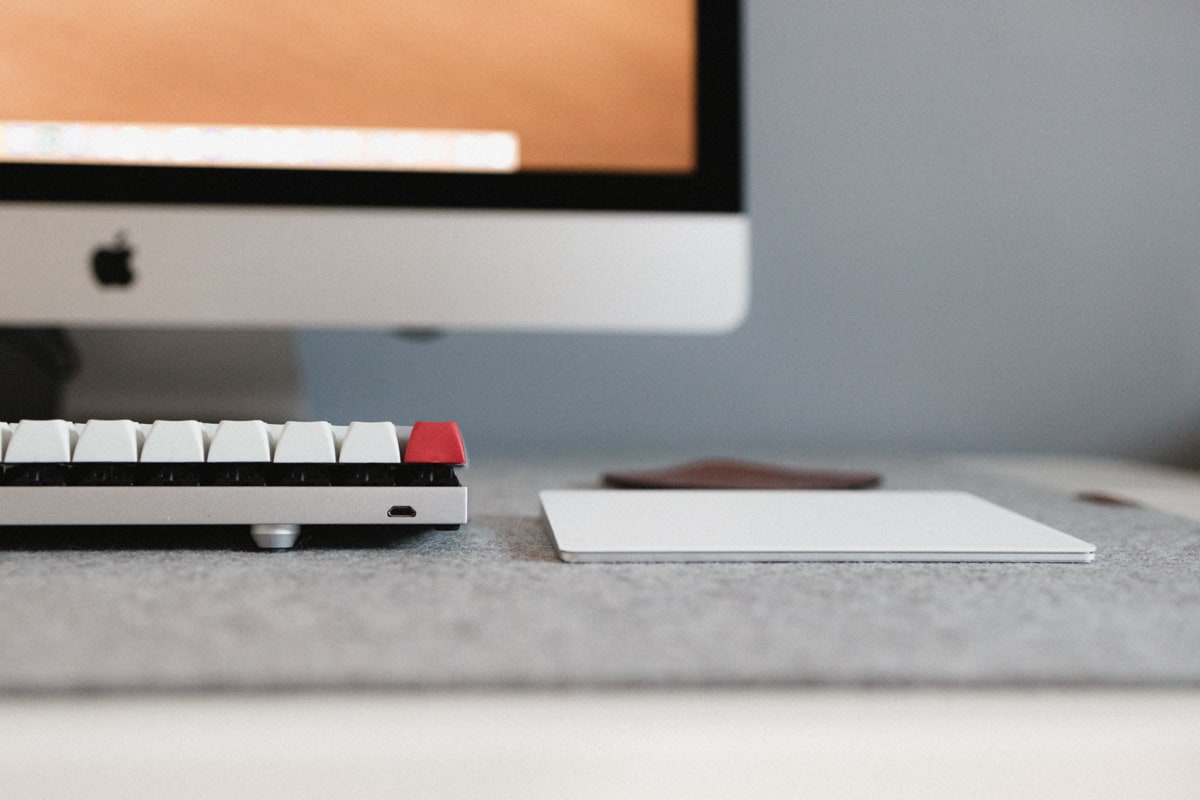
That said, micro-USB really is a thing of the past. I have cords lying around that can connect easily to any iMac or Windows PC, but there’s nothing to like about micro-USB given USB-C’s existence. The ViBE debuted in 2017, and so I’d like to see a USB-C variety of this keyboard.
Wrap Up
The Vortex ViBE has been an absolutely awesome learning experience and first-time-foray into the world of mechanical keyboards. I’ve learned about things I love, things I dislike, and things I dislike with a passion.
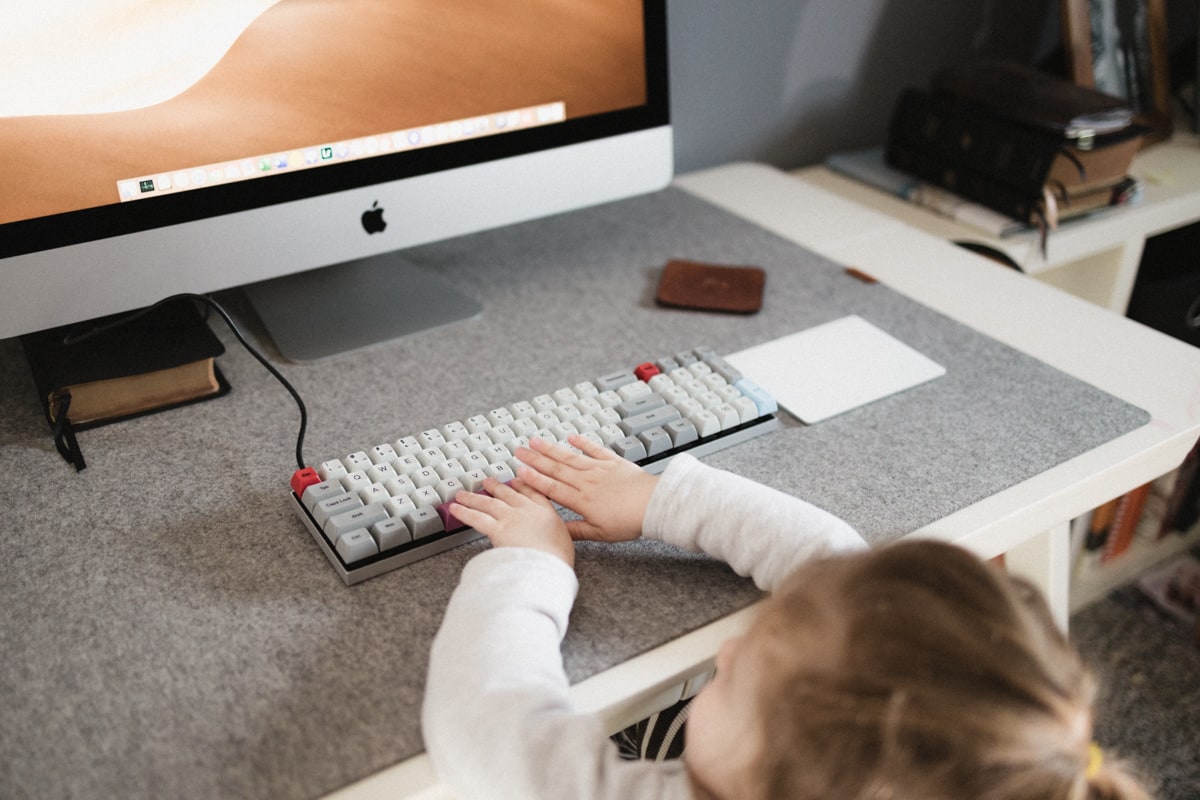
Love: These PBT, R3, multi-colored keycaps are to die for and feel great on my fingers. I’ve really grown to like the Cherry MX Brown switches and, when the keycaps are attached properly, the stabilizers provide really great tactile feedback anywhere on the key. I also really like having a number pad (for when it works) housed in such a small keyboard.
Dislike: I discovered how much I rely on both arrow keys and the function row in all of my daily jobs. I am quite unlikely to buy any 60% keyboard ever again.
Dislike with a Passion: I am very disappointed the extra keycaps provided don’t really stay put on the switches and stabilizers. I bought this keyboard because of the beautiful extra keycaps and I can’t even use them. I’m tremendously annoyed about the fact the keyboard is stuck in tenkeyless mode on my Mac. Even after working through firmware updates, the ViBE has lost all number pad functionality. And finally, I’m fortunate enough to be writing this review with a towel below my wrists — perhaps this is something to get used to in the mechanical keyboard world, but this tall keyboard is killing my wrists.
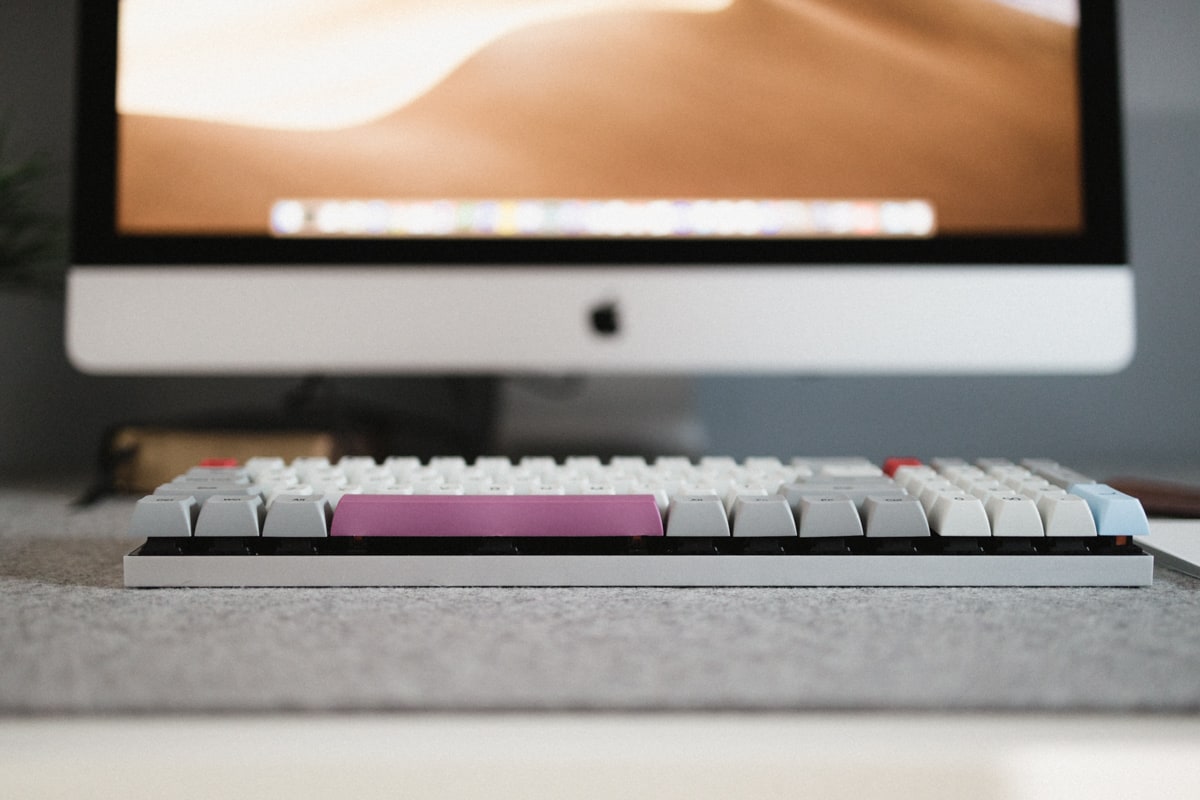
I am excited to say I’m finally one of The Sweet Setup’s mechanical keyboard group. I am proud to say that I’ve enjoyed my experience and that I can enjoy all the clickiness these traditional keyboards provide.
But alas, I believe the ViBE’s days are numbered on my desk.
Must-Have, Most-Used Apps for Thinkers
We spend an inordinate amount of time sorting through hundreds of apps to find the very best. Our team here at The Sweet Setup put together a short list of our must-have, most-used apps for writing, note-taking, and thinking.
